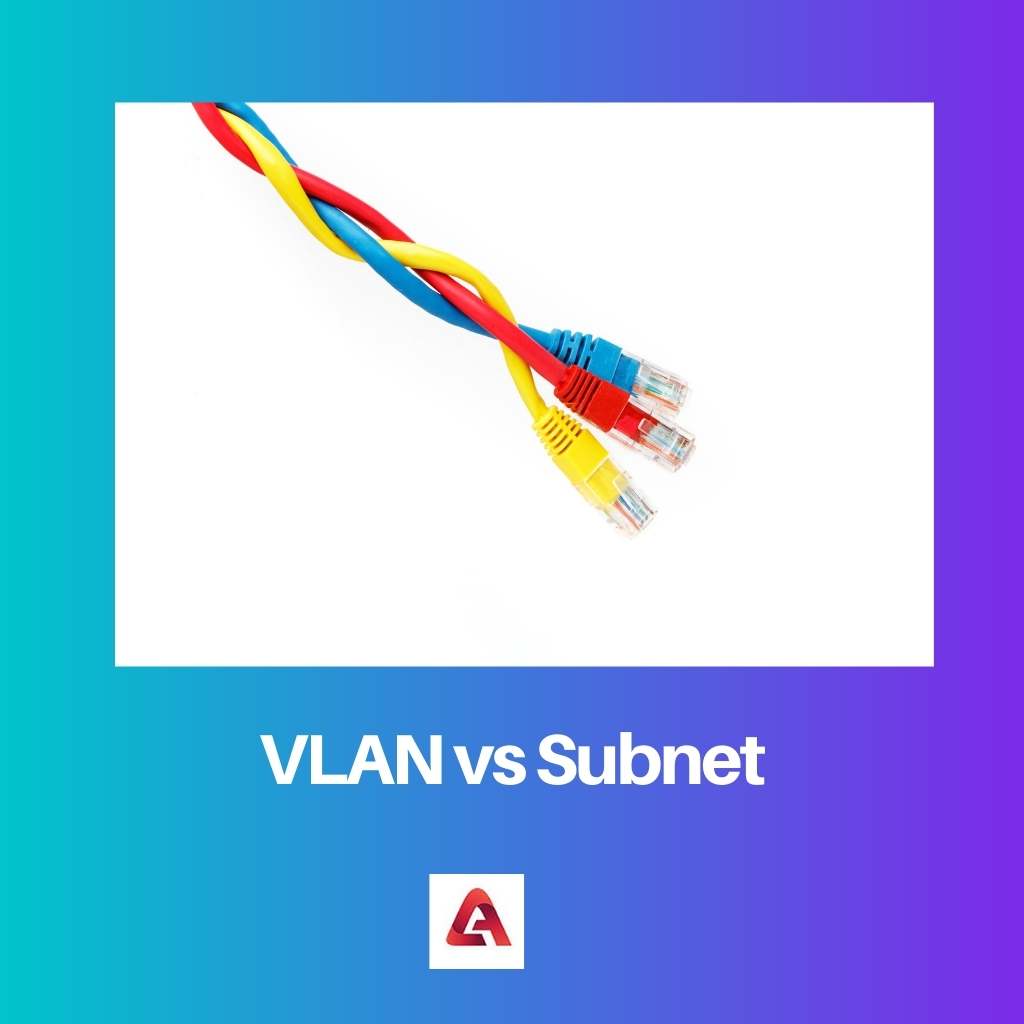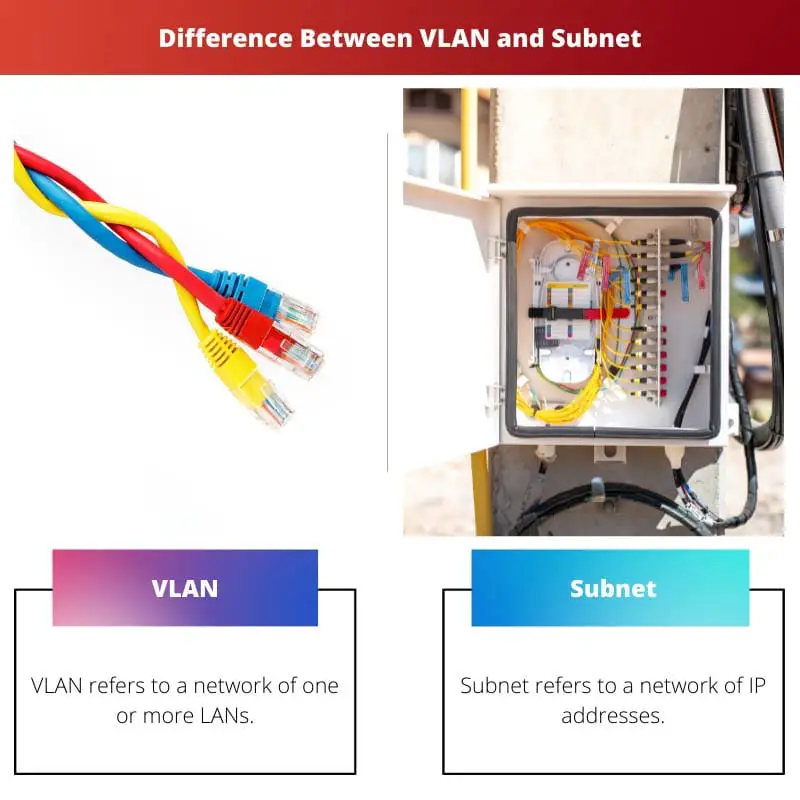When it comes to networks and their strengths, a large number of people are confused about the two terms VLANs and Subnet.
It is very easily confusing as both are analogous and have similar characteristics; however, they differ in some key aspects of their functioning and specificity of action.
Key Takeaways
- VLAN (Virtual Local Area Network) segregates devices within a LAN, while a subnet divides an IP network into smaller networks.
- VLANs operate at Layer 2 (Data Link Layer) of the OSI model, while subnets operate at Layer 3 (Network Layer).
- VLANs enhance network security and performance, whereas subnets improve address management and network organization.
VLAN vs Subnet
VLANs are used to improve network performance, security, and manageability by partitioning a physical network into multiple broadcast domains. A subnet is a smaller network created by dividing a larger network into multiple smaller networks to improve network performance, manageability, and secure communication.

VLAN can be expanded to be written as Virtual Local Area Network. It is a virtual switch. VLAN refers to a network of one or more LANs or Local Area Networks which work under a specific subnet mask.
This means it has a defined IP address and MAC address. It helps in partitioning the existing network.
Subnet or sub-networking refers to the segmentation of a large network into smaller groups.
Subnet refers to the small network of IP addresses connected through a similar subnet mask or code, providing an efficient method of partitioning a large network.
Comparison Table
| Parameters of Comparison | VLAN | Subnet |
|---|---|---|
| Full-Form | VLAN’s full form is a virtual local area network. | A subnet is short for the subnetwork. |
| Meaning | VLAN refers to a network of one or more LANs. | A subnet refers to a network of IP addresses. |
| Determined By | The switch or router determines VLAN networks. | The IP address of the user determines subnets. |
| Based On | VLAN is a software-based network. | A subnet is a hardware-based network. |
| Speed | VLAN networks have more speed. | Subnets have comparatively lower speeds. |
| Range | VLAN networks have a larger range. | Subnets have a narrower range. |
What is VLAN?
Virtual local area networks, commonly called VLANs, refer to a local connection between two or more local area networks or LANs.
The connection is not a physical one, but a virtual one meaning no wires are connecting two or more switches, but the switch is itself physically and logically by gates, and hence the network gets the name virtual local area network.
When a VLAN network is set, it is much more controllable by the user as the network is determined by the router or switch, giving more access to its security and other properties making it more secure.
However, the network domain of a VLAN is at the L2 level, while that of a subnet is at the L3 level.
An L2-level domain means VLANs with the same VLAN identifier can communicate. To communicate with other VLANs, they have to take the help of IP addressing again.
This is the reason why the confusion between the two arises. For inter-VLAN communications, subnets are required. Hence VLANs are a type of subnet.
However, VLAN networks are flexible and show less traffic congestion as efficient traffic segmentation occurs at the switch. It is secure and has a larger range of networks, and supports many devices at once.
Hence VLAN networks are preferred in areas needing connectivity for a large number of devices like offices and enterprises.
What is Subnet?
Sub networking or subnetworks are a small group of IP or Internet Protocol addresses connected to establish a network between the devices that are defined by the same subnet mask.
Every device has an interface with which it interacts with other devices. Each interface has an IP address. To receive information from the internet, one must possess an IP address.
When a router is connected to a large number of devices, the router has its IP address, and the devices with it connect also have their IP addresses.
Usually, the first 24 digits out of their 32-bit IP address remain the same for a given Subnet. This 24-but IP address refers to a Subnet mask.
A Subnet essentially workspaces a physical network into many parts accessible to the user. The IP address of the user and the switch determines the network.
This Subnetting is a hardware-based technology. The access to a Subnet remains limited as the IP address of devices has always been fixed, and the range also remains narrow, and flexibility is also reduced.
The Subnet network works at the interface layer, which means the L3 layer. This means it can connect to VLANs outside the physical network as well.
This is the main difference between a VLAN and a Subnet.
Main Differences Between VLAN and Subnet
- VLAN networks have a large range of actions and hence are preferred in large workspaces, whereas subnets have a limited range of networks.
- VLANs are more flexible and customizable in comparison to subnets.
- VLANs establish intra- VLAN communication, while subnets establish an inter – VLAN communication.
- VLANs work on the data link layer or L2 layer of the broadcast domain, while Subnets work on the interface layer or L3 layer of the broadcast domain.
- VLAN networks are more secure in comparison to Subnets.
- VLANs focus on MAC addresses while sub-networking focuses on IP addresses and hence have different methods of communication.




